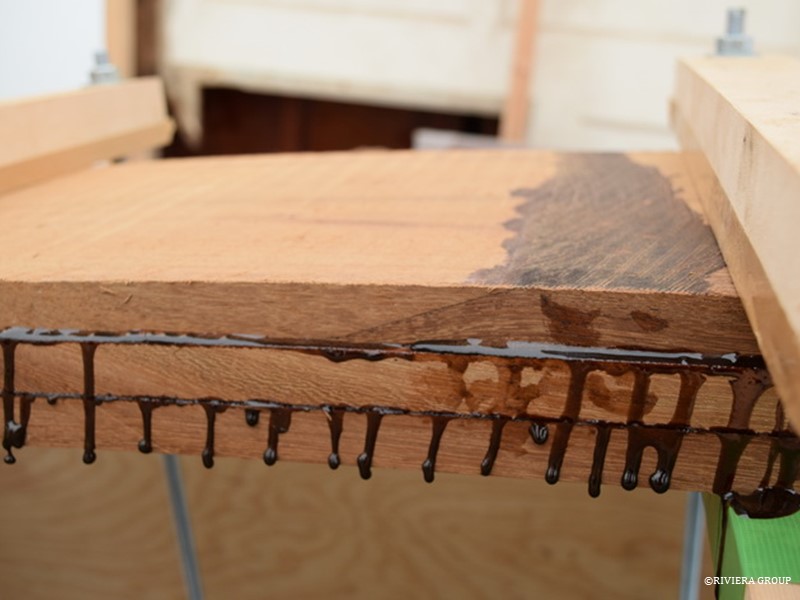May 7 to May 13, 2018
The first stage of the lamination of the stem . . .

. . . and more layers as the process continues.
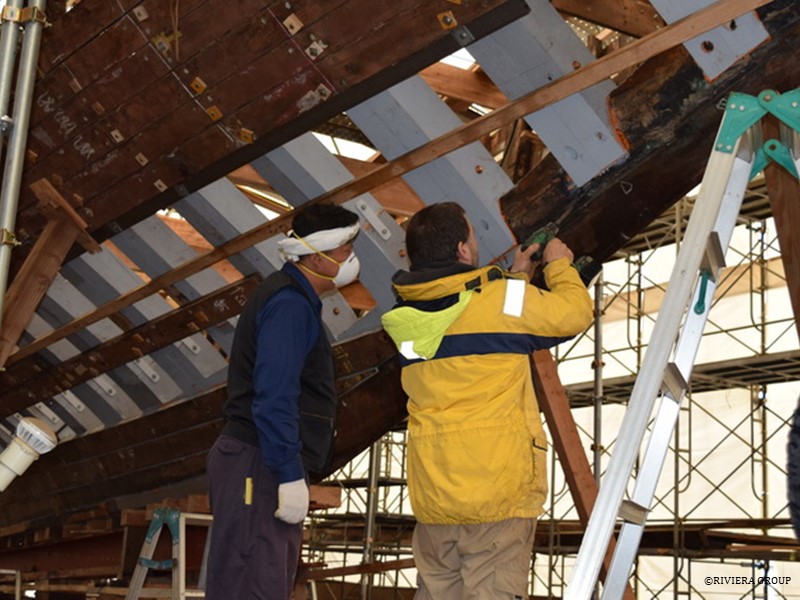
Paul and Keiji are checking the fairness of the frames where they are boxed into the stem. We used ribbands and stiff batons to fair the back of the frames in preparation for the next strake.
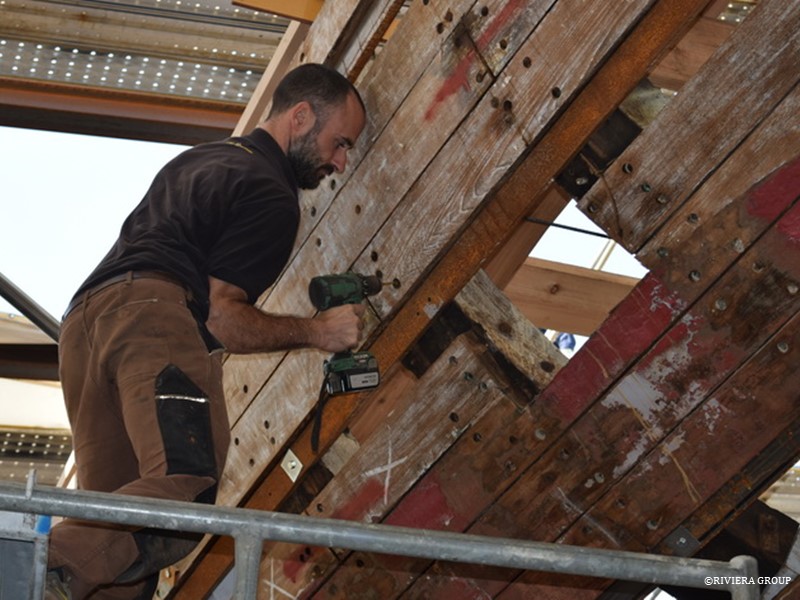
Richard is drilling out some fasteners higher up on the hull. The rectangular hole to his right is where the engine exhaust exited the hull. The plank that filled this hole was the shortest plant possible and the shortest plank on the boat. It was clear that the exhaust port was changed at some point in the past, and the solution was to cut the old plank and fit a short piece. We were utterly amazed to find that there were no fastenings in the plank, so we gave it a sharp tug and out it came. It was held in position with only caulking and luck. It was at the water line, so someone had great faith in the caulking. And, to be fair, it had kept the water out. Needless to say, this practice is definitely not recommended and this is one plank that would be replaced.
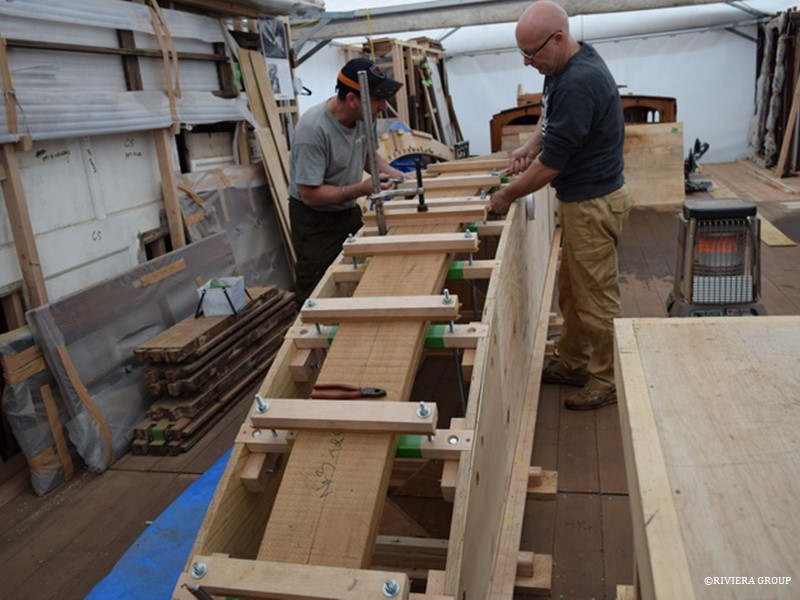
Pascal is helping Ben with the stem laminations.

The glue is very sensitive to atmospheric conditions, so we installed a combined hydrometer and thermometer to monitor air moisture content and temperature.
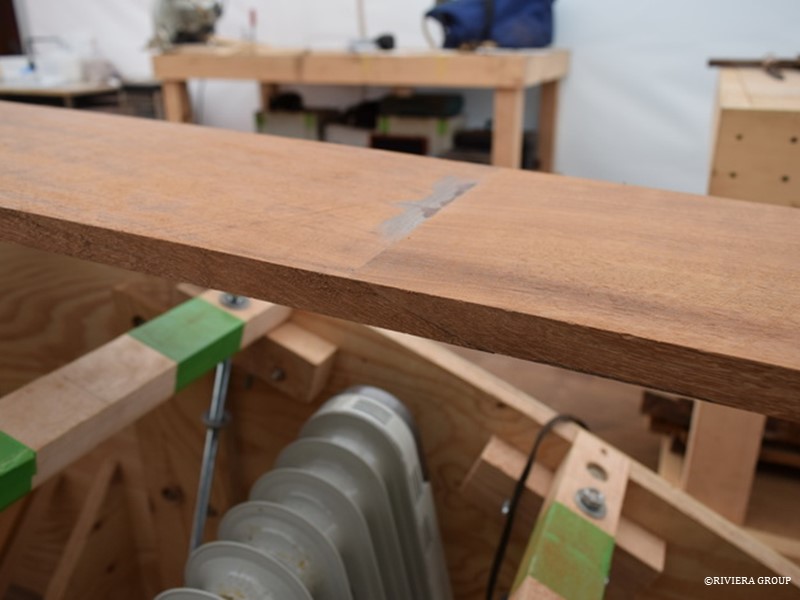
We placed oil heaters below the jig to raise the ambient temperature. The gentle, dry heat produced by oil heaters are ideal for this type of work as they can be left running safely for long periods of time.
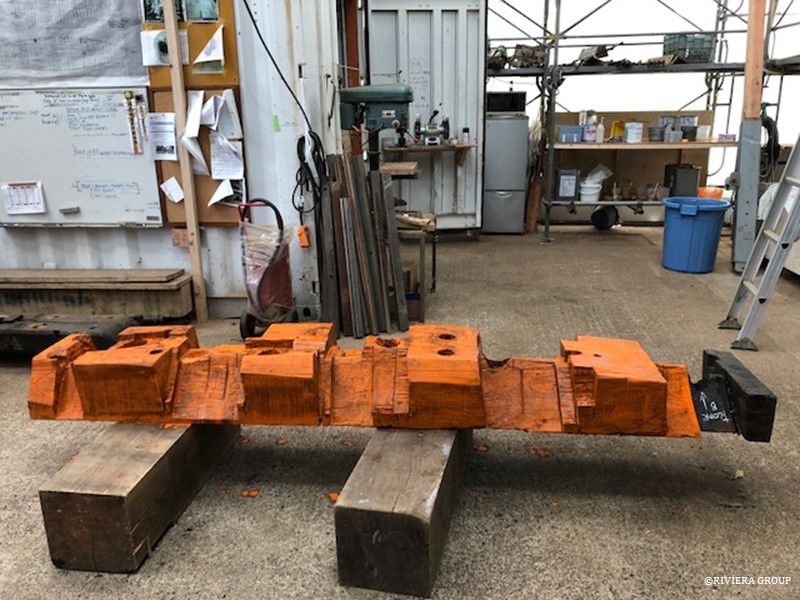
The main mast step has been soaked in linseed oil with red lead added, giving it this orange color. It is of English elm and almost unrecognizable lying upside down. The cut outs accommodate the shape of the boat, frames, floors and bevels, allowing it to fit snugly into the hull. We’re not sure if it’s original, since it would have to have been removed when the lower stem section was replaced in the past, but it’s likely so.

